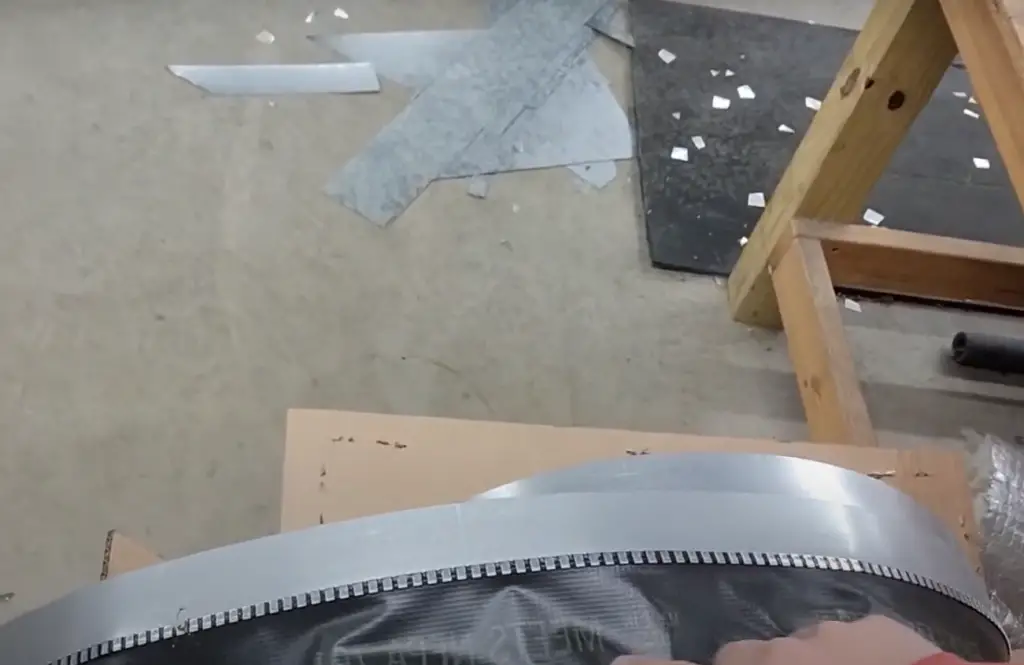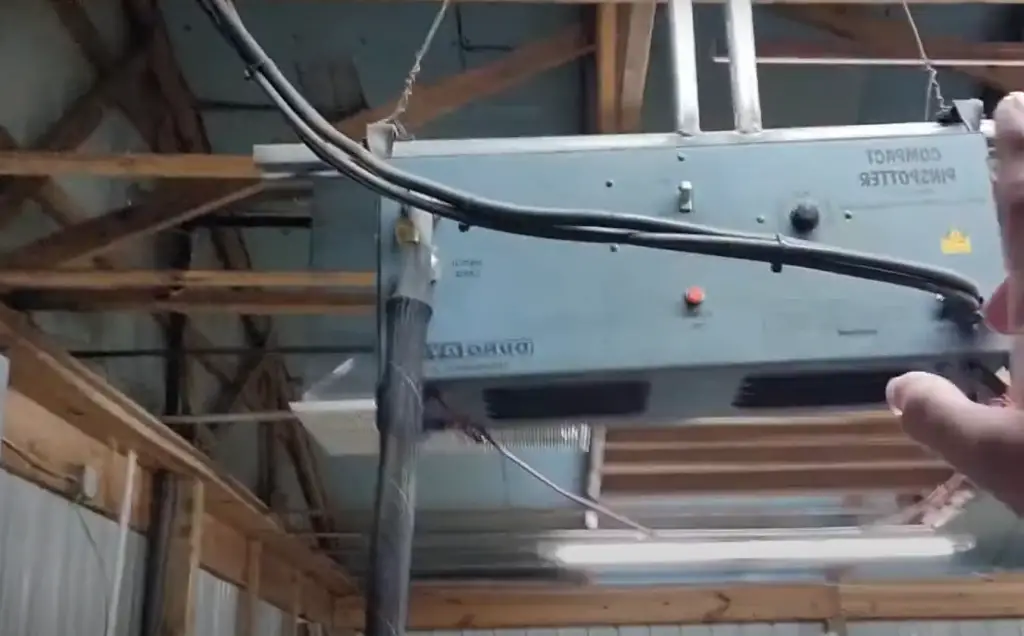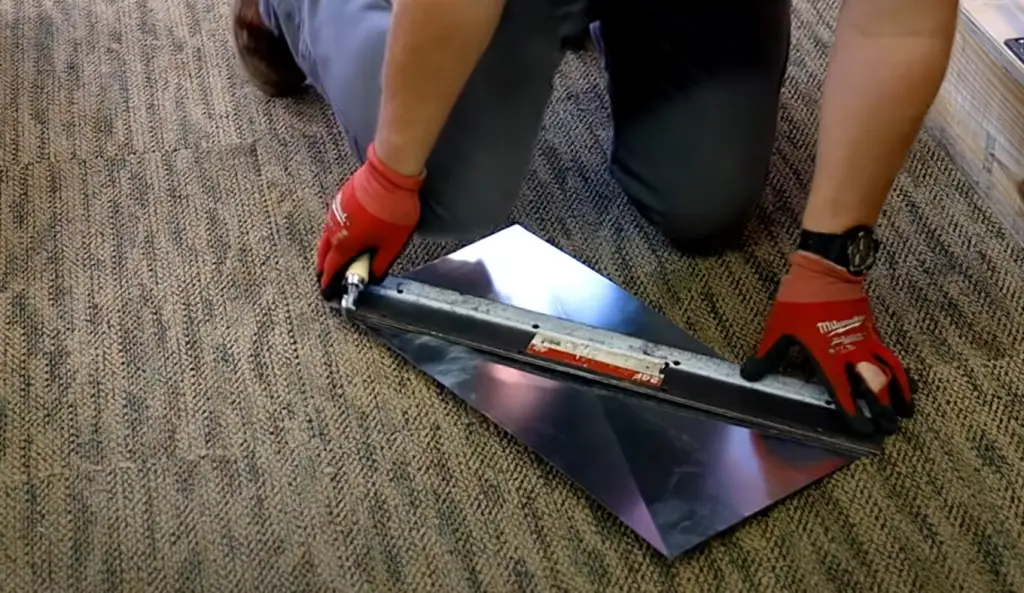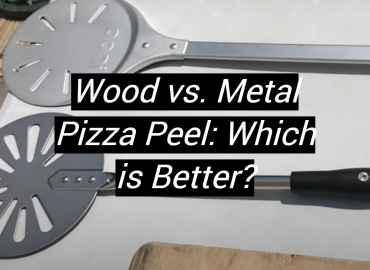How Much Does Metal Ductwork Cost?
When you’re deciding to add ductwork in your living space or workplace, the first step is determining how much it will cost. Metal ductwork is a popular choice for many applications, but it can vary widely in price depending on the materials used and the complexity of the installation. In this blog post, we’ll give you a rough idea of what you can expect to pay for metal ductwork, as well as some tips on how to keep costs down.
Ductwork Cost per Square Foot
The typical cost of metal ductwork is about $10-$15 per square foot. However, this can vary depending on the type and quality of materials used. For example, galvanized steel ducts are more expensive than regular steel and aluminum. The size and complexity of the job also affect pricing. Larger jobs or those with many elbows and turns may cost up to $25 per square foot for installation costs alone. Additionally, any necessary insulation or other materials will add to the overall cost.

When hiring a contractor to install metal ductwork, expect to pay an average of $35-$45 per hour in labor costs. This rate can go up or down depending on experience level as well as accessories like hangers, straps, and clamps that may be needed. The size of the job will also have an effect on labor costs, as larger jobs are generally more time consuming and require more man hours to complete.
Overall, metal ductwork is a more expensive option than other materials like PVC or fiberglass. However, its superior quality and durability make it worth the additional cost for many home improvement projects.
Ultimately, metal ductwork can provide long-term savings with its lower maintenance requirements compared to other materials.With proper installation and maintenance, metal ductwork can last for decades without needing replacement or repair.
Cost of Ductwork per Linear Foot
Picking out the right ductwork materials can be tricky, especially when you factor in cost per linear foot. The cost of these materials varies widely depending on your selection. Metal ductwork – such as aluminum, steel, galvanized steel or stainless steel – is typically more expensive than plastic or fiberglass systems. Aluminum ducts are generally the least expensive metal option, costing around $3-4 per linear foot. Steel and galvanized steel tend to be slightly higher in price at around $4-5 per linear foot. Stainless steel is often the most costly choice for metal ductwork, with an average cost of about $6-7 per linear foot. In addition to the material costs associated with your ductwork, you will also need to factor in installation fees when determining how much your project will ultimately cost. [1]
Ductwork Cost by Type of Project
The cost of metal ductwork depends on the type of project you’re undertaking. For residential purposes, you can expect to pay anywhere from $2.00 to $5.00 per linear foot for standard galvanized steel ductwork and about twice that for stainless steel. If your project is commercial or industrial in nature, the costs could be much higher due to increased complexity and use of more specialized materials.
Cost of New Ductwork by Type
The cost of new metal ductwork can vary greatly depending on the type of metal used and the size of the system. For example, galvanized steel ducts are generally less expensive than stainless steel ones. The same is true for aluminum and copper options.

Galvanized steel ducts typically range in price from $2 to $4 per linear foot, while stainless steel versions can cost as much as $8 per linear foot. Aluminum tends to be slightly more expensive than galvanized steel but still significantly cheaper than stainless, with costs running between $3 and $6 per linear foot. Copper is usually the most expensive option, with prices sometimes reaching up to $20 per linear foot.[2]
Labor Cost of Ductwork Installation
When it comes to the cost of installing metal ductwork, labor costs must also be taken into consideration. Depending on the complexity of your project, you may need an experienced HVAC contractor to install the ductwork properly. This will involve measuring and cutting sections of metal pipe, connecting various components with screws or rivets, fastening supports and brackets securely, and insulating the pipes to prevent energy loss. If a significant amount of remodeling is needed for installation purposes, then additional labor costs may apply as well.
On average, HVAC contractors charge around $50 – $100 per hour for their services. The total labor cost can vary significantly depending on factors such as the size of your project, how difficult it is to access the ductwork, and the complexity of the layout. It’s important to get a few different quotes from qualified contractors so you can compare prices and choose the best value for your project.
Overall, metal ductwork is relatively affordable when compared with other types of materials like fiberglass or PVC. However, it’s important to factor in both material and labor costs when estimating your total project budget. With proper installation and maintenance, metal ductwork can provide reliable performance over many years of service.
Duct Replacement Cost by Location
While the cost of metal ductwork may vary widely depending on the size and complexity of your project, location can also play a major role in overall costs. In areas with higher costs of living, such as large cities or coastal regions, labor and materials may be more expensive. On the other hand, contractors in more rural areas may be able to offer lower prices due to less competition and lower operating costs. To get a sense of what it might cost in your area, contact several local contractors and request price estimates for similar projects they’ve completed. You should also ask if they offer any special discounts or seasonal promotions that could help reduce the total cost.

Overall, having high quality metal ductwork installed is an investment that can pay off in the long run. Not only can it help prevent costly repairs and replacements down the line, but it can also improve your home’s air quality. If you’re considering investing in metal ductwork for your home, take the time to find a reputable contractor who can provide an accurate quote and walk you through the installation process. With proper research and planning, you should be able to get high-quality metal ductwork at a price that fits within your budget. [3]
AC Duct Replacement Cost
AC duct replacements are often necessary when old metal ducts have become rusted or cracked. Replacing your air conditioning system’s metal ductwork can be a costly endeavor, and prices will vary based on the size of the job and the type of material used. While metal ductwork is typically more expensive than flexible alternatives, it is also known to last longer and better resist damage caused by extreme temperatures.
Cost to Install a Furnace and Ductwork
Installing a furnace and ductwork can be costly. The total cost of installation is dependent on the size of the space, type of materials used, and labor costs for all involved in the process. Generally speaking, furnaces start at $800 and can range up to several thousand dollars depending on brand, size, features, efficiency rating, etc. Ductwork also comes with its own price tag.
Depending on the type of metal used (aluminum vs steel), how much ductwork is required to cover the space being heated or cooled, and any additional insulated components needed for your system; you could easily spend anywhere from several hundred dollars up to thousands on this aspect of your project alone. Additionally, if extra charges such as permit fees or extended labor time are added on, this total cost can increase as well. [4]
Adding a Vent to Existing Ductwork Cost
If you need to add a vent to an existing metal ductwork, the cost may vary depending on the size and complexity of the work. Generally speaking, adding vents to existing ductwork can range from $200 – $500. This will typically include materials such as galvanized steel vent pipes, brackets, screws, and insulation. The installation process for adding vents is relatively straightforward but requires precision cutting of sheet metal to ensure a proper fit.

Therefore it may be wise to consult with a professional HVAC expert for larger projects in order to ensure that all safety requirements are met. Additionally, if your ductwork needs repairs or needs to be replaced with new material (such as expensive flexible tubing), then these costs should also be taken into account.
The cost of adding a vent to existing metal ductwork may seem expensive, but it’s important to remember that the benefits far outweigh the expenses. By installing vents and proper insulation, your home will be more energy-efficient, helping keep your heating and cooling costs low. Additionally, properly sealed vent pipes can help reduce noise coming from your HVAC system and ensure air quality is kept at a safe level. So if you’re planning on undertaking any type of metal ductwork project, it’s best to consult with an expert in order to get the job done right!
Cost to Insulate Ductwork
Insulating your ductwork is essential to maximize the energy efficiency of your HVAC system. Insulation helps prevent heat loss and can save you money on your energy bills. The cost of insulating metal ductwork varies depending on the size of the project and the type of insulation being used.
Insulation can come in pre-cut rolls or in spray form – both have their advantages and disadvantages. Consider the climate where you live when choosing insulation as well as any soundproofing needs you may have since some types are better at blocking noise than others.Additionally, if installation is complicated because of difficult access or assembly, this could also increase the cost. Consider hiring a professional installer to ensure proper installation and get the best performance out of your insulation. Properly installed insulation can last up to 15 years so it’s worth the investment in order to save money on energy bills over time.
Finally, don’t forget about air sealing when insulating your ductwork. Sealing any cracks or gaps with caulk or mastic can help prevent conditioned air from escaping through small openings, which will maximize efficiency and improve indoor comfort levels. Air sealing can be done at the same time as insulation for an additional fee but is well worth it for improved energy savings. [5]
Rerouting Ductwork Cost
If you decide to reroute your existing ductwork, the costs vary depending on the complexity of the project. The cost for moving or adding ducts in an unfinished basement is usually lower than if you had to run it through walls or under floors. Labor costs will also depend on access and other issues that may arise during the installation process.

In some cases, a professional might need to move structural elements such as joists or beams to create space for new ductwork. Or they might have to move plumbing pipes or electrical wiring out of the way.
Duct Maintenance
In addition to the initial cost associated with metal ductwork, regular maintenance is important. This ensures that your system is running efficiently and safely. Some common maintenance chores include cleaning off dust and debris that can accumulate in the ducts over time, checking for air leaks, inspecting insulation for proper installation, and replacing old parts as needed. Costs for these tasks vary depending on their complexity, but it’s best to budget a few hundred dollars annually for regular upkeep of metal ductwork.
Additionally, consult a professional HVAC technician if you need assistance with more complex tasks or repairs. With regular care, metal ductwork should last many years before needing replacement.
Flex Duct vs Metal Duct Cost
When considering the cost of metal ductwork, it is important to also consider the cost of flex duct.
In comparison to metal ducts, flex ducts are generally more affordable upfront but have a shorter lifespan. The cost of installing flex ducts will usually range from $2-5 per linear foot.In contrast, metal ducts are made from galvanized steel or aluminum and are much more durable than flex ducts. However, they do come with a higher price tag due to their increased durability. On average, the cost of installing metal ducts ranges between $10-20 per linear foot including materials and labor costs. [6]
Enhancement and Improvement Costs
When it comes to metal ductwork, the costs don’t stop at just installation. In addition, homeowners should consider the enhancements and improvements that can be made to make their system more efficient. For example, adding insulation to the exterior of your ductwork will help keep air from escaping and prevent condensation from forming inside. This type of enhancement typically adds about 10-20 percent onto the total cost of installing metal ductwork.

Other enhancements such as adding a digital thermostat or having zoning systems installed may also increase the overall cost of installing metal ductwork. Additionally, if you need to replace existing flex duct with sheet metal ducts in order to improve performance and reduce noise levels, this will add to the overall costs associated with metal ductwork. Ultimately, the cost of metal ductwork depends on your specific needs and requirements. It’s important to weigh all options and consider how much you are willing to invest in order to get the best results.
Additional Considerations
In addition to the cost of material, professionals must also factor in labor costs. Professional installation of metal ductwork can be complex and difficult, so it is necessary to hire an experienced contractor or HVAC specialist. Depending on the size and complexity of the project, additional materials such as insulation may also need to be purchased. Furthermore, the design of the ductwork should take into account its location within a building; for example, ducts located outdoors or in humid environments may require special weatherproofing treatments.
Finally, it’s important to select a material that is appropriate for your environment; aluminum is not recommended for wet or marine applications due to corrosion risk while galvanized steel can last up to 40 years if properly maintained. Ultimately, the cost of metal ductwork will vary depending on the material chosen and complexity of the installation. With careful planning and research, however, homeowners can find an option that meets their budget.
Mini-Split Ductless AC System Vs. Central AC System
When selecting an air conditioning system for your home, you have the choice of either a mini-split ductless AC system or a central AC system. A mini-split ductless AC system is a great option if you are looking to cool only certain areas of your home as it gives you more control over which rooms receive cooling.

This type of air conditioner is also relatively easy to install and doesn’t require any ductwork. Central air conditioning systems, on the other hand, require more extensive installation and involve the installation of metal ductwork throughout the home.
FAQ
How do you calculate the cost of ductwork?
The cost of ductwork depends on several factors, including the type of metal used, the size and length of the ducts, and any additional components or accessories needed. The most common metals used in ductwork are galvanized steel and aluminum, with galvanized steel being more affordable. To calculate the cost of your specific job, you should contact a qualified contractor who can provide an accurate estimate based on your project’s specifications. Additionally, if there is existing ductwork already in place that needs to be replaced, this will also impact the overall cost.
What are the pros and cons of metal ductwork?
Metal ductwork offers many benefits over other types of HVAC systems. For example, because it is made of metal, it is resistant to corrosion and other environmental damage that can occur with other materials. Additionally, metal ducts are typically easier to install than some alternatives, such as fiberglass or PVC pipes. On the downside, metal ductwork can be more expensive upfront compared to other types of systems. In addition, if not maintained properly, it can become clogged or corroded over time.
How long do metal ducts last?
The lifespan of a metal duct system depends on several factors including the type of material used and how well it is maintained and serviced regularly. Generally speaking, most high-quality galvanized steel or aluminum duct systems should last for 30-50 years before needing to be replaced. However, regular maintenance and servicing can help extend the lifespan of your metal ducts.
Does metal ductwork require a lot of maintenance?
Metal ductwork does require regular cleaning and servicing to ensure that it is functioning properly and efficiently. This should be done every couple of years by a qualified HVAC technician, who will inspect for any signs of damage or wear and tear, as well as clean out any buildup inside the system. By performing regular maintenance on your metal ductwork, you can help prolong its lifespan and keep it running in top condition for many years to come.
Is new ductwork expensive?
The cost of new ductwork depends on several factors, such as the size and length of the system, the type of metal used, and any additional components or accessories needed. Generally speaking, though, most high-quality metal ductwork systems will be more expensive upfront compared to other types of HVAC systems. However, by investing in a quality system now, you can save money on repairs and maintenance later down the line.
Is metal ductwork better than Flex?
Whether metal ductwork or flex is the better option for your home depends largely on the size and layout of your space as well as your budget. Generally speaking, metal ducts are more durable and can last longer with less maintenance than flex. However, flex systems can be easier to install and may cost less upfront. Ultimately, it’s best to speak with a qualified HVAC contractor who can assess your needs and advise you on which system will be the best fit for your situation.
What type of metal is used for ductwork?
The most common metals used for ductwork are galvanized steel and aluminum, with galvanized steel being the most popular choice. Other less common types of metal may be used depending on the specific application, such as copper or stainless steel. Your HVAC contractor can advise which type of metal is best suited for your particular project.
How long does metal ductwork last?
The lifespan of metal ductwork depends on several factors, including the type of material used and how well it is maintained. Generally speaking, most high-quality galvanized steel or aluminum duct systems will last for 30-50 years before needing to be replaced. However, regular maintenance and servicing can help extend the lifespan of your metal ducts.
Why is HVAC ductwork so expensive?
HVAC ductwork is one of the more expensive components of a heating and cooling system. This is because the cost of metal ductwork depends on several factors, including the material used for construction (aluminum or galvanized steel), size and complexity of the job, labor costs, tools required to install it and whether specialized equipment such as an access panel or custom-cut sections are necessary. Additionally, installation can quickly add up when you factor in professional labor charges and longer distances between air handler units. As such, it’s important to get multiple estimates from reputable HVAC contractors before committing to a particular project.
What is the best material for ductwork?
The best material for ductwork is generally galvanized steel. It’s lightweight, durable and resistant to corrosion and rust, making it an ideal choice for both residential and commercial applications. Additionally, galvanized steel is easily customizable since it can be cut into various sizes or shapes depending on the project requirements. However, aluminum is another viable option that’s becoming increasingly popular with homeowners due to its insulation properties and cost-effectiveness. Ultimately, choosing the right material depends on your specific needs and budget. Ultimately, metal ductwork may be expensive but it’s a vital component of any heating and cooling system.
Useful Video: Flex vs. Rigid Metal AC Duct – My preference may surprise you!
Conclusion
Metal ductwork is an effective and efficient way to heat, cool, and ventilate a home or commercial building. The cost of metal ductwork depends on several factors including the type of material used, size of the system needed, labor costs to install the system, and any additional features required. Generally speaking, metal ductwork systems are estimated to be about twice as expensive as PVC or fiberglass systems. However, due to its superior durability and energy efficiency benefits, many customers find it worth the upfront expense. Ultimately, having an accurate estimate from a licensed HVAC contractor will help determine which option best fits your budget.
No matter which type of system you choose for your heating, ventilation and cooling needs, routine maintenance is essential. Keeping your HVAC system optimally maintained can help extend its working life and provide you with the most efficient heating and cooling possible.
References:
- https://ocmcdonald.com/what-can-you-expect-to-pay-for-sheet-metal-ductwork/
- https://www.fixr.com/costs/ductwork
- https://skyheating.com/blog/how-much-should-hvac-ductwork-installation-cost/
- https://www.lawnstarter.com/blog/cost/ductwork-installation-price/
- https://www.pickhvac.com/hvac-duct/cost/
- https://www.homeadvisor.com/cost/heating-and-cooling/install-ducts-and-vents/






